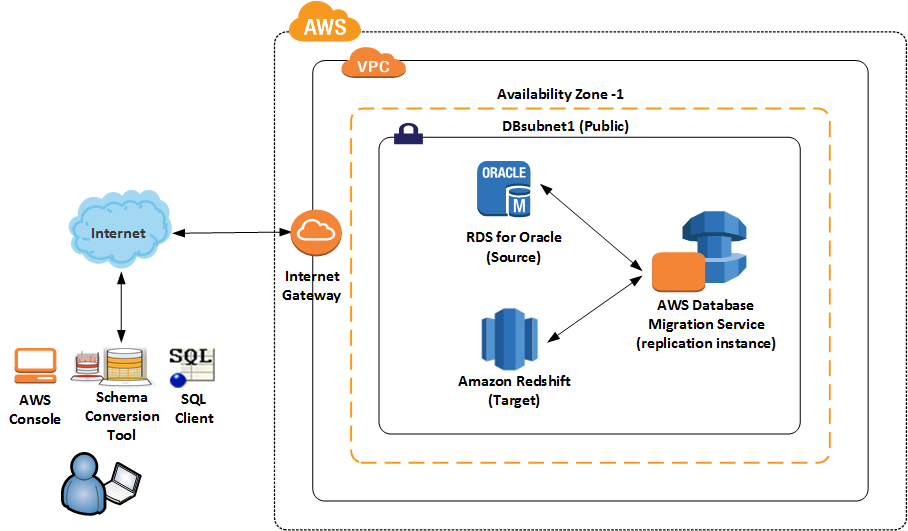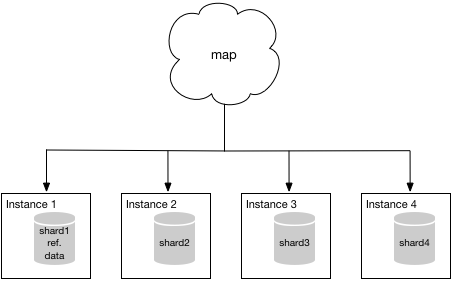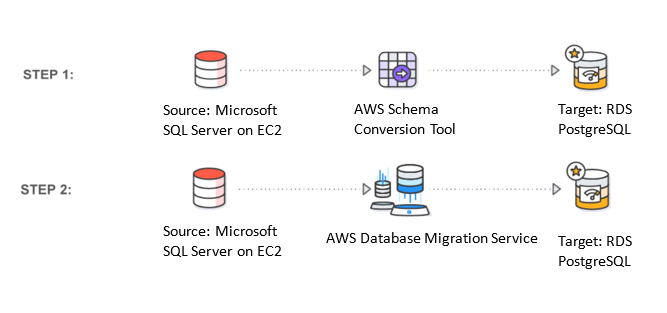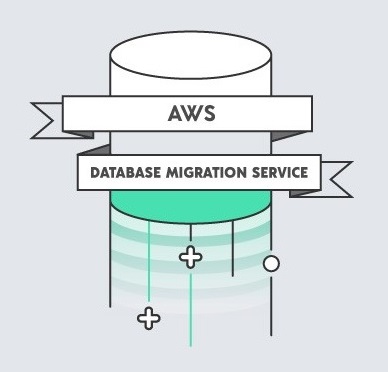AWS Database Blog
Tag: DMS
How to Migrate Your Oracle Data Warehouse to Amazon Redshift Using AWS SCT and AWS DMS
Shree Kenghe is a solutions architect at Amazon Web Services. This blog post gives you a quick overview of how you can use the AWS Schema Conversion Tool (AWS SCT) and AWS Database Migration Service (AWS DMS) to help you migrate your existing Oracle data warehouse to Amazon Redshift. Amazon Redshift is a fast, fully […]
Set Up AWS DMS for Cross-Account Migration
Hemant Borole is a big data consultant at Amazon Web Services. AWS Database Migration Service (AWS DMS) helps you migrate databases to AWS easily and securely. AWS DMS supports homogenous migrations such as Oracle to Oracle, as well as heterogeneous migrations between different database platforms, such as Oracle to Amazon Aurora. For customers who use […]
Migrating Oracle Database from On-Premises or Amazon EC2 Instances to Amazon Redshift
Ballu Singh and Pubali Sen are solutions architects at Amazon Web Services. AWS Database Migration Service (AWS DMS) helps you migrate databases to AWS easily and securely. The AWS Database Migration Service can migrate your data to and from most widely used commercial and open-source databases. The service supports homogenous migrations such as Oracle to […]
Events and Notifications in AWS Database Migration Service
We’ve recently added a new feature in AWS Database Migration Service (AWS DMS)—the ability to receive DMS events notifications, such as email messages, text messages, or calls to HTTP endpoints, through Amazon Simple Notification Service (Amazon SNS). You now can subscribe and receive notifications for two types of events—events related to DMS instances and events […]
Reduce Resource Consumption by Consolidating Your Sharded System into Aurora
Ed Murray is a manager at Amazon Web Services. When faced with the prospect of scaling your relational workload, you have generally had two options available: scale up or scale out. Scaling up is easy—just buy a bigger database host. Scaling out is more difficult. It requires you to shard your database into several physically […]
How to Migrate Your Oracle Database to Amazon Aurora
Ed Murray is a manager at Amazon Web Services. This blog post gives you a quick overview of how you can use the AWS Schema Conversion Tool (AWS SCT) and AWS Database Migration Service (AWS DMS) to facilitate and simplify migrating your commercial database to Amazon Aurora. In this case, we focus on migrating from […]
Cross-Engine Database Replication Using AWS Schema Conversion Tool and AWS Database Migration Service
Prahlad Rao is a solutions architect at Amazon Web Services. Customers often replicate databases hosted on-premises to the AWS Cloud as a means to migrate database workloads to AWS, or to enable continuous replication for database backup and disaster recovery. You can both migrate and perform continuous replication on the AWS Cloud with AWS Database […]
Modifying Tasks and Table Mapping in the Console in AWS Database Migration Service
We’ve recently added two features in AWS Database Migration Service (AWS DMS)—modifying tasks and table mapping through the AWS Management Console. These two new features represent a new step in our long journey to improve and enhance our migration and replication service based on the feedback we receive from our customers. Let’s outline some highlights […]
Database Migration—What Do You Need to Know Before You Start?
Congratulations! You have convinced your boss or the CIO to move your database to the cloud. Or you are the boss, CIO, or both, and you finally decided to jump on the bandwagon. What you’re trying to do is move your application to the new environment, platform, or technology (aka application modernization), because usually people […]
How to Script a Database Migration
Satheesh Subramanian is a software development engineer at Amazon Web Services. AWS Database Migration Service (DMS) lets you migrate databases to AWS easily and securely. The process consists of setting up a replication instance, source and target endpoints, and a replication task. The replication task runs on the replication instance and migrates data from the […]









